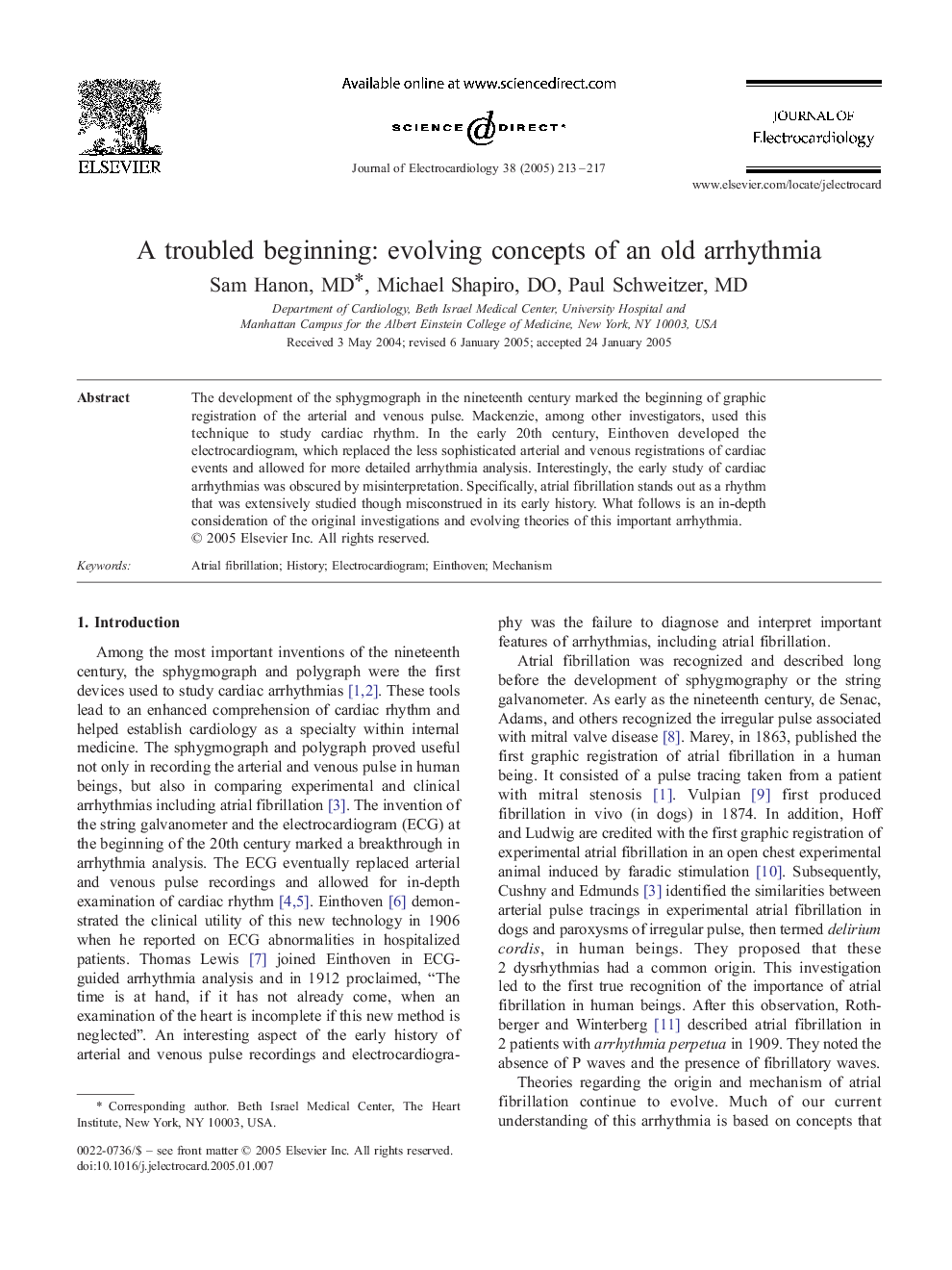| Article ID | Journal | Published Year | Pages | File Type |
|---|---|---|---|---|
| 9171560 | Journal of Electrocardiology | 2005 | 5 Pages |
Abstract
The development of the sphygmograph in the nineteenth century marked the beginning of graphic registration of the arterial and venous pulse. Mackenzie, among other investigators, used this technique to study cardiac rhythm. In the early 20th century, Einthoven developed the electrocardiogram, which replaced the less sophisticated arterial and venous registrations of cardiac events and allowed for more detailed arrhythmia analysis. Interestingly, the early study of cardiac arrhythmias was obscured by misinterpretation. Specifically, atrial fibrillation stands out as a rhythm that was extensively studied though misconstrued in its early history. What follows is an in-depth consideration of the original investigations and evolving theories of this important arrhythmia.
Related Topics
Health Sciences
Medicine and Dentistry
Cardiology and Cardiovascular Medicine
Authors
Sam MD, Michael DO, Paul MD,
